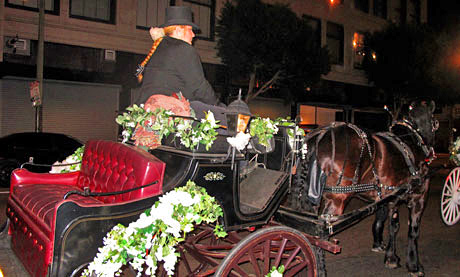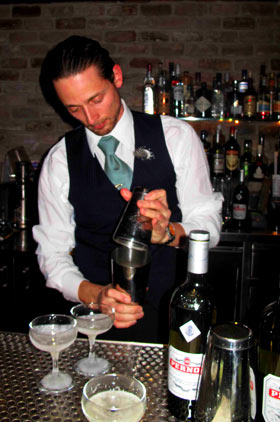The Event
The Pernod Absinthe Downtown Trot, like the drink itself, was no stranger to the elegance of antiquity. Passengers were met by horse drawn carriages and ferried to three of LA’s hottest spots for night life.
First was The Varnish, where bartenders Eric Alperin and Chris Bostick delighted guests with a stunningly accurate recreation of four classic Pernod Absinthe cocktails.
Next up was an exclusive preview into downtown supper club First & Hope, where guests were regaled with the music and styles of the 1930s.
Finally was The Edison, a staple of Los Angeles.
Each destination featured Pernod Absinthe crafted from a recipe nearly identical to the original incarnation of Pernod Absinthe, first produced in 1792. The 136-proof spirit is distilled from three main ingredients: Grand Wormwood, Fennel, and Star Anise.
The History of Absinthe
Pernod Absinthe, the famous alcoholic beverage, has a strange and unique history. Absinthe Pernod was initially served for medicinal purposes.In the past century, Absinthe has managed to become banned In European countries and America.
In 1789, the Swiss doctor, Pierre Ordinaire prescribed an “Absinthe Elixir,” for medicinal purposes. In 1855, an Absinthe factory in France was being run by Pierre Ordinaire’s great – grand – son.
In the early twentieth century, bans were placed on Absinthe in Switzerland, France, the Netherlands and in the United States. It was believed to cause hallucinogenic damage to the brain. A less potent version of the liquor was legalized again in Europe in 1920. 88 years after the ban was lifted in Europe, it was lifted in the U.S. too.
Absinthe’s controversy has to do with its reputation for having hallucinogenic effects. This controversy led to the legend of “The Green Fairy” that appears when consumed. The green liquid has three essential ingredients: Fennel, Grand Worm Wood, and Star Anise. Fennel is the source of the bright green color.
The five step Absinthe ritual is often followed. It consists of slowly dripping cold water over a sugar cube – filled – spoon above a glass of absinthe. The “Absinthe Museum of America” in New Orleans has rare historical spoons and glasses made specifically for the Absinthe ritual.
To learn more about this strange green liquid visit www.AbsintheMuseumofAmerica.com or www.pernodabsinthe.com.









